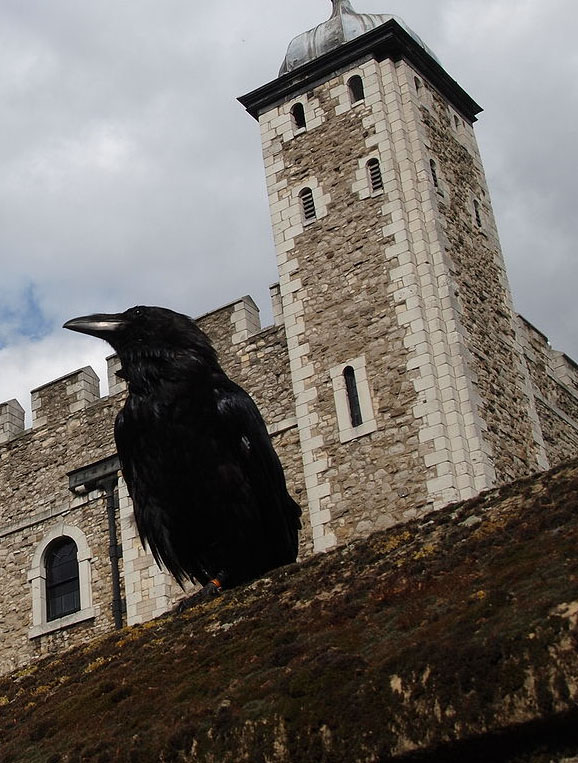The Tower Ravens
During World War II, a raven helped alert the city to approaching bombers
/https://tf-cmsv2-smithsonianmag-media.s3.amazonaws.com/filer/15/65/15653914-9fa2-41a4-933f-96b99b7c3408/tower_of_london_viewed_from_the_river_thames.jpg)
Historian Boria Sax says his interest in the Tower of London’s famous ravens started with a brochure published in 1997. “For many centuries,” according to A Guide to the Tower Ravens, “ravens have guarded the Tower of London and, since they are said to hold the power of the Crown, it is believed that the Crown and the Tower will fall, if ever the ravens should leave. Fortunately, these respected residents, since the reign of King Charles II , have been protected by royal decree.”
Why the heck would Charles II deign to recognize some squawking birds? According to legend, the king and his royal astronomer were looking through a telescope when ravens flew overhead, befouling both man and telescope. The outraged king decided to kill the ravens, but after the royal astronomer reminded him of the legend, Charles II contented himself with moving the observatory to Greenwich, and leaving the ravens at the Tower.

The Yeoman Warder Ravenmaster (who cares for the resident birds) lives in an apartment within the Tower walls. Ravens live about 25 years, though the Tower's oldest raven lived to age 44. Detail of a photograph by A. Norppa.
The anecdote, says Sax, is absurd. In his new book, City of Ravens (The Overlook Press, 2012), he explains that ravens are diurnal, so they wouldn’t have interfered with nighttime observations. And moving the observatory to Greenwich wouldn’t have solved anything, since the area had the same birds as London.
Intrigued, Sax tried to find a copy of the royal decree. None existed, and Sax found no mention of ravens in any of the scholarly biographies of Charles II. After poring over books from the Renaissance, as well as works of ornithology, folklore, and history, Sax was unable to find any references to the Tower ravens that predated the close of the 19th century. “It is inconceivable that the authors of these books and other visitors to the Tower of London could have failed to mention the ravens if these had been present for centuries,” writes Sax. “After all, it is not everywhere that one sees huge black birds with trimmed wings bustling about and croaking loudly.”
The earliest mention of ravens in the Tower dates to 1883, most likely the year they were introduced. But the legend dates from World War II, specifically the London Blitz. The Tower, closed to visitors during World War II, was hit by 15 bombs, 3 missiles, and numerous incendiaries. Twenty-three people and two ravens were killed during these attacks. “It was during this time,” writes Sax, “that the legend that Britain would fall if the ravens left the Tower began.”
Jackie, the “lucky” raven, lodged at the nearby Watney’s Stag Brewery, may be one possible origin of the legend. Jackie engaged in a bit of airplane spotting, using his distinctive caw to warn brewery workers of approaching bombers. The legend of Jackie may have been conflated with an existing legend of Tower ravens serving as a warning system should anyone try and steal the Crown Jewels.